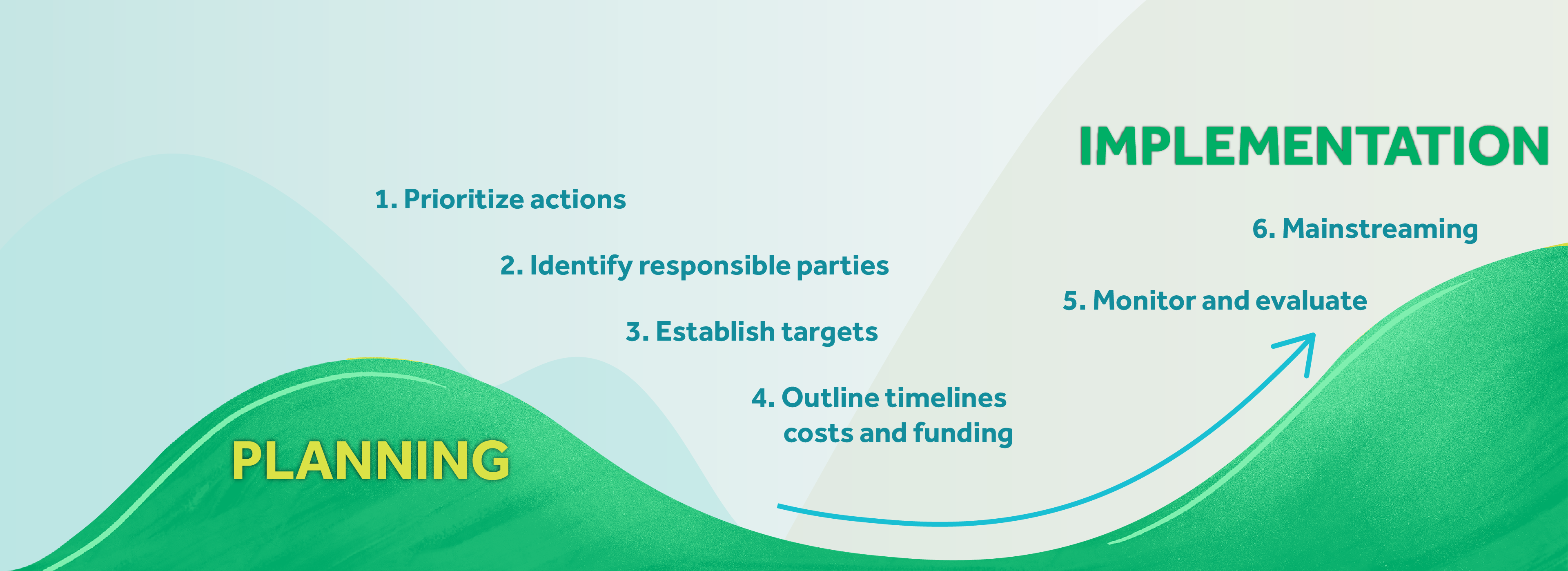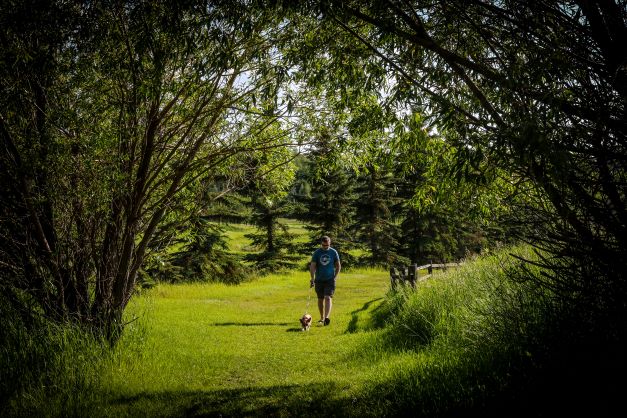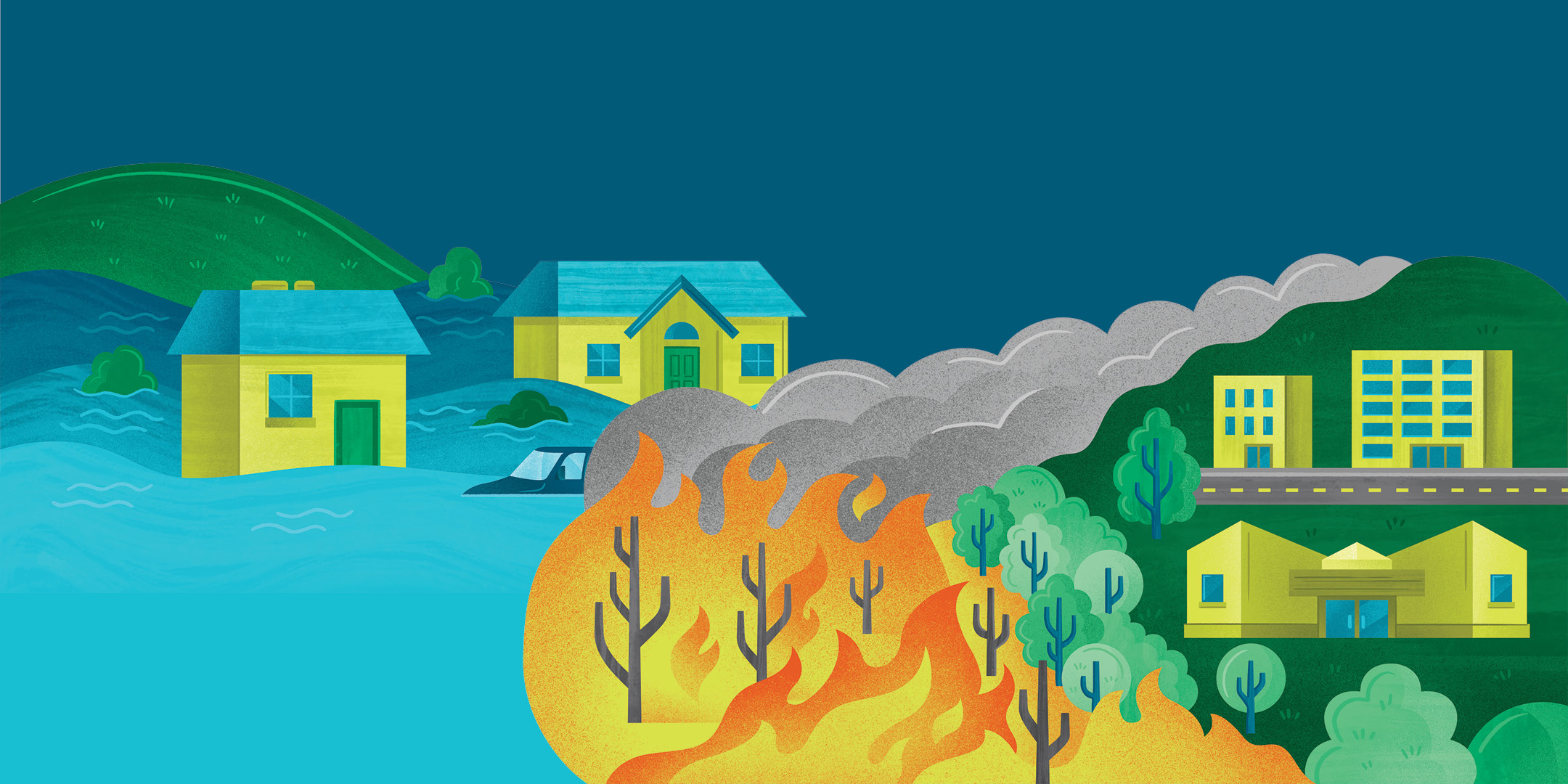As the Climate Resilience Capacity Building Program moves into its final year, we share lessons learned from community climate adaptation plans and outline tips for next steps in your adaptation journey, including five funding programs to continue advancing your initiatives.
The Climate Resilience Capacity Building Program was established with $4.5 million dollars provided by the Government of Alberta for municipalities and Indigenous communities to prepare for a changing climate.
In order to successfully adapt to potential climate risks—conditions like drought, a longer wildfire season, and heat stress on infrastructure—it is crucial to do a risk assessment and to create resilience plans. These are the first steps that the Climate Resilience Capacity Building Program was designed to support.
From Feb. 2022 to Mar. 2023, the program was met with great uptake—all available funding has been allocated and the program is closed to new applications. Active projects will be worked on until the program fully closes on Mar. 31, 2024.
Lessons learned
The first of several dozen projects have completed in recent months. We asked program participants to share some of their lessons from their completed projects, in the spirit of community-to-community learning.
The Summer Village of Ghost Lake was the first community to complete a project. Reflecting on their Climate Resilience and Adaptation Plan, they had this to say:
Actions we take today to respond to climate change can influence how our communities respond to impacts in the future. This does not need to be an overwhelming task – there are a lot of beautiful and well-done examples of climate adaptation plans out there that can be intimidating for small, rural communities that do not have the resources or capacity to take on significant, multi-year implementation plans. There is a role to play for all communities, even small ones, to participate in a collective action approach to climate adaptation to the benefit of our regional and national communities.
The City of Camrose recently completed a Climate Risk and Vulnerability Assessment. When completing their project, they shared that “this project definitely increased our corporate knowledge of infrastructure and forced us to take the time to evaluate in ways we had not before. The action items, although often needing more research, do give us a bit of a roadmap for future resiliency.”
For their project, Elizabeth Métis Settlement learned that climate change poses several risks to its assets, proposed initiatives, and people when developing a Climate Resiliency Plan. The plan provides recommendations to increase the resilience of these assets to climate risks, which will better position Elizabeth Métis Settlement to respond to these threats in the future. As Elizabeth Metis Settlement moves forward, they encourage other communities to “create strong partnerships and think long term” as they approach their own climate resilience planning.
Moving from planning to implementation
Taking steps to implement adaptation actions identified in the climate adaptation planning phase is critical to building community resilience. In climate adaptation, implementation is the commitment to follow through to ensure that adaptation actions are carried out.
Moving from planning to implementation involves a series of steps including: identifying priority actions and the parties responsible for implementation; establishing targets and indicators to measure progress; outlining timelines, costs, and funding sources to implement each action; and putting in place a strategy to update the plan and monitor its effectiveness, including budgets and timelines for monitoring and evaluation.

Effective implementation is also achieved through mainstreaming climate adaptation, or integrating climate adaptation and resilience in community policies, projects, decision making, and day-to-day operations.
There are several factors that present barriers to effective climate adaptation implementation and mainstreaming. To support communities moving from adaptation planning to implementation, political leadership and direction from all levels of government is a necessary catalyst. One example of this is the new National Adaptation Strategy, which establishes a policy direction for climate adaptation across five systems – disaster resilience, economy and workers, infrastructure, health and wellbeing, and nature and biodiversity.
Sustained funding programs also provide support for implementation. If your community or organization is seeking funding for climate adaptation and resilience initiatives, explore the funding opportunities below.
Find funding for your implementation projects
The following programs are administered by various organizations and have program specific eligibility criteria. Follow the links to learn more.
Disaster Mitigation and Adaptation Fund
Funding for infrastructure projects designed to prevent, mitigate, or protect against the impacts of climate change and extreme weather. Eligible projects include new construction and/or modification or reinforcement of existing public infrastructure.
Funding, resources, and training to support local governments in sustainability, emissions reduction, and resiliency initiatives. Use the Funding Opportunity Finder to find compatible GMF funding.
Clean Energy for Rural and Remote Communities Program
Funding for renewable energy projects, energy efficiency measures, and capacity building in Indigenous, rural, and remote communities. Projects are supported by the knowledge and leadership of the newly formed Indigenous Council for Wah-ila-toos.
Alberta Ecotrust Environmental Grant Programs
Support for environmental initiatives that address the four focus areas: Nature-based solutions and conservation; Climate resilience and emissions reduction; Circular Economy; and Initiatives that address the foundational categories of Justice/Equity, Monitoring, or Financial.
For more information about climate funding for local governments in Alberta, visit the Action Centre’s Funding Guide.
For additional supports to evaluate your community’s progress and effectiveness on climate adaptation implementation, visit the ICLEI Canada Indicators and the FCM Climate Adaptation Maturity Scale tools.

Andrea Miller
Project Assistant
Via an internship position through the Adaptation Resilience Training program, Andrea supports communities through activities and services offered through the Climate Resilience Capacity Building Program.


You must be logged in to post a comment.